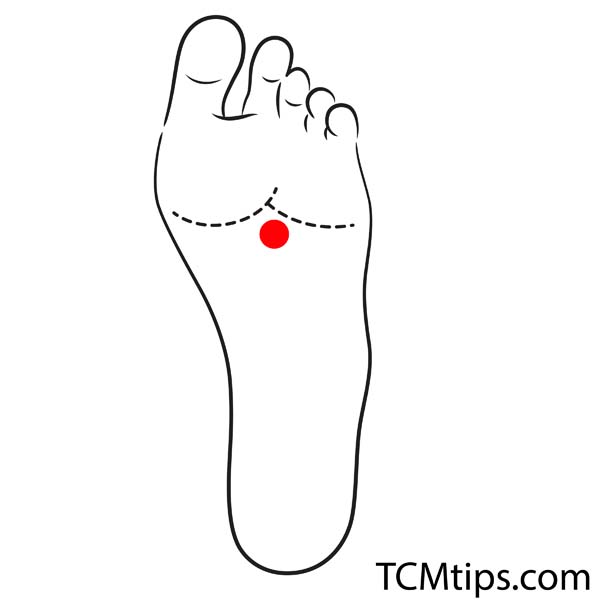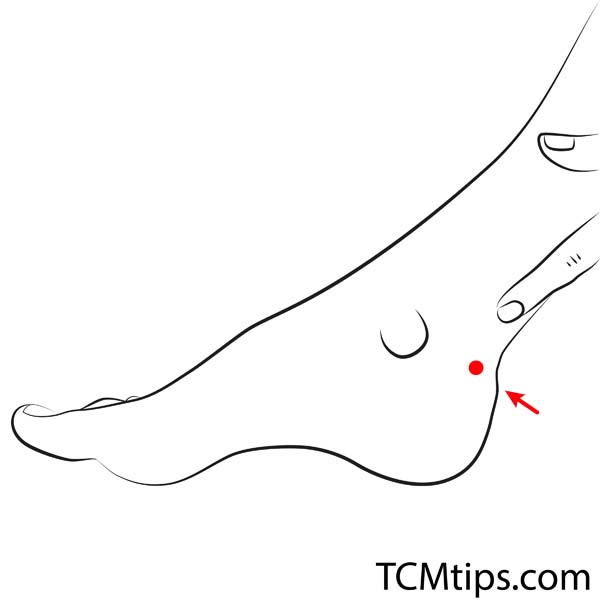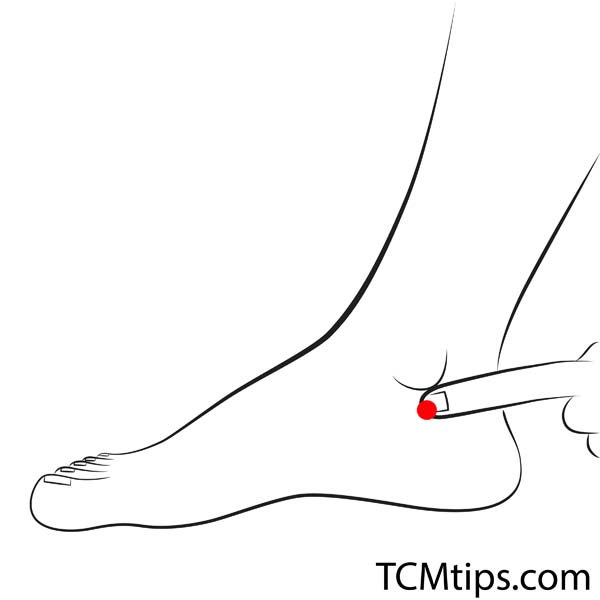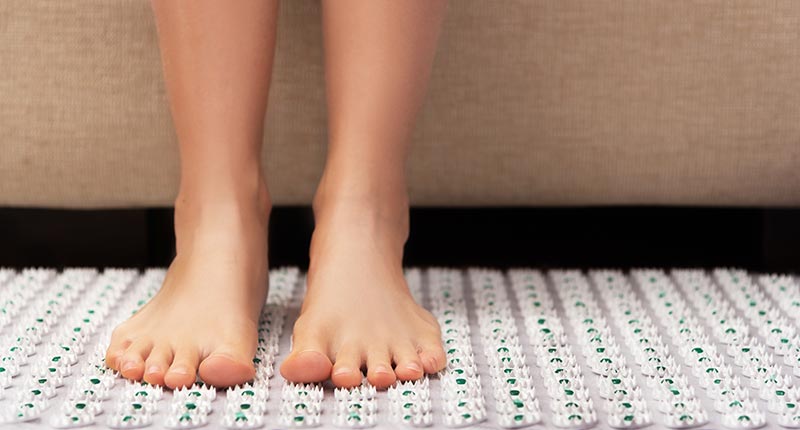Meridian points help us daily to stay healthy if we know what they are and how to use them. Normally, the sound of kidney meridian points will bring to mind the core function of the kidney, which is to remove waste products from the body. However, Kidney meridian acupoints help treat a number of health issues. To understand this better, you need to know what meridians are.
In Traditional Chinese Medicine (TCM), a meridian is a channel or network where qi (or life’s energy) and the other essential substances of the body flow. It is somewhat similar to the circulatory system of Western Medicine, but unlike the circulatory system, meridians are not physical.
The meridian system consists of twelve primary meridians, twelve extraordinary meridians, and twelve distinct meridians. The kidney meridian is one of the primary meridians, and in this article, I’ll show you four of the acupoints in the kidney meridian that can improve your health and keep you happier.
What Does The Kidney Meridian Do?

The kidney meridian provides the channel for which the kidney qi flows. In Chinese medicine, the kidneys are responsible for the growth and development of the bones. Hence, they nourish the marrows, which provide red and white blood cells. When your kidney qi is weak, you’ll be prone to anemia and immune deficiency.
Also, since in TCM, the spinal cord and the brain are seen as forms of the marrow, a weak kidney qi would also lead to poor memory, poor thinking ability, and backache. Important to strengthening the kidney qi is balancing the kidney yin and yang. These are opposite forces that are the source of life.
The yin side of the kidney controls the water elements, thereby ensuring that the tissues and organs of the body are well hydrated and nourished. The yang side of the kidneys is in charge of the fire element, thus ensuring that the tissues and organs of the body stay warm. Balancing the yin and yang of the kidney is what stimulating the kidney meridian points does.
How Can I Improve My Kidney Qi?

It is important to maintain a sufficient amount of qi to stay healthy and well. The reason for this is that sufficient qi helps maintain a balance of yin and yang. When you have kidney deficiency, you’ll experience pain or illness in areas of the body that the kidney is responsible for.
From my explanation of the function of the kidney meridian above, deficiency in kidney qi can lead to memory loss and knee or back pain. So, if you have a low kidney qi, you’ll need to improve it, and it is believed in Chinese medicine that your body will let you know what it needs if you’re attentive.
When you have kidney deficiency, you’ll most likely have a craving for foods like beans, seafood, bone broth, and walnuts that support kidney function. However, the most likely way to improve kidney qi is by massaging the kidney meridian acupressure points. I’ll show you four of these that you can easily use.
Where Is The Pressure Point For Kidney?
The kidney meridian points location is almost at every part of the body save for the head and neck. The kidney meridian system starts from under the toe to the side of the ankle, then upwards on the medial side of the leg before entering the body to the end of the spinal column.
From there, it connects to the kidney, where it branches in two. One to the pubic area, abdomen, and clavicle and the other internally through the liver, lungs, diaphragm, throat, and the roof of the tongue.
Kidney Meridian Acupoints
Here are the four kidney meridian acupoints that you can readily reach to treat a number of health conditions.
Acupoint: KI-1 (Other Names: Kidney-1/Yong Quan/Gushing Spring)

The first of the kidney meridian points I’ll be discussing is the very first of the kidney meridian acupoints – KI-1. In Chinese, it is called Yongquan, which means Gushing Spring. KI-1 is located in the sole of the feet. You’ll find it in the center of the sole of the feet, between the second and third toes, at the crook that forms at one-third of the under of the feet from the tip of the toes when you bend the toes forward.
Stimulating KI-1 helps you calm down. It also improves water metabolism in your system, reduces swelling, and helps you recover from fatigue. Therefore, it is used clinically to treat loss of consciousness, dizziness, nausea, and constipation, as well as serve as acupressure for seborrheic dermatitis.
All you need do is press the acupoint hard for 3 seconds and pause for another 3 seconds. Do this several times for the best result.
Acupoint: KI-3 (Other Names: Kidney-3/Tai Xi/Supreme Stream)

The next of the kidney meridian points to note is KI-3 or Taixi. Like KI-1, KI-3 is located on the lower part of the leg. You’ll find this acupoint at the depression between the inner side of the ankle and the Achilles tendon, just behind the anklebone.
In TCM, KI-3 is well known for its anti-aging function. Stimulating this acupoint will strengthen your kidney’s life force and reduce the symptoms related to aging. A 2015 research on healthy volunteers shows that performing acupuncture on KI-3 has an effect on certain brain functions related to perception, movement, and association, as well as improving auditory and cognitive disorders.
Stimulating KI-3 will also reduce fatigue, strengthen the legs, prevent hearing loss, tinnitus, cold feet, forgetfulness, and urinary issues. KI-3 is also one of the acupressure points for pelvic pain.
Acupoint: KD-6 (Other Names: Kidney-6/Zhao Hai/Shining Sea)

KD-6, Zhaohai, or Shining Sea is another of the kidney meridian acupuncture point I want you to take note of. Like the other two kidney meridian pressure points, KD-6 is located on the feet. To locate KD-6, place a thumb below the end of the inner ankle of the feet. The depression after your thumb is KD-6.
Stimulating KD-6 nourishes the kidney, thus helping you recover from fatigue and boosting your immunity. This kidney acupoint is also effective in treating gynecological issues like insomnia and cold feet. KD-6 is one of the acupressure points for menstrual cramps.
Acupoint: KD-27 (Other Names: Kidney-27/Shu Fu/Shu Mansion)

Finally, the last of the handy kidney meridian points you need to know about is KD-27. Unlike the other three Kidney acupoints I’ve discussed, KD-27 or Shufu is not located on the leg. Shufu is located on the chest. To locate it, trace your fingertips to the underside of your collarbone to the middle of your chest. The point before the midline of the chest where the depression ends is KD-27.
In TCM, KD-27 is responsible for boosting immunity as well as improving appetite. Stimulating this acupoint will also stop cough, chest pain, and vomiting. To massage KD-27, use your middle and ring finger to push the acupoint. Push for 2 seconds at first, then when you get to a certain strength, push for form 5 seconds before gradually reducing the pressure. Relax the pressure for 2 seconds before stopping altogether.
It’s best to do this once a day and before you retire to bed. Also, it’s best if you tap your fingertips on the pressure point, in addition to pushing it.
 P. Sze
P. Sze 
















